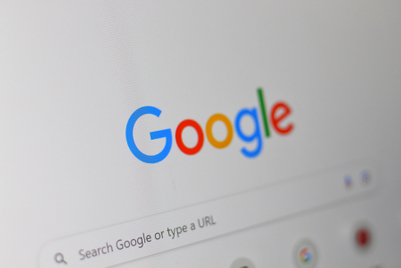
A patent application filed and published by Google's researchers aims to tackle the problem of fake reviews by giving more credence to reviews by local users who visit the sales and service locations more frequently.
According to the filing, the location-based data of a user being tracked by Google would be given primacy in authenticating and weighing the value of a review.
The scale of the challenge in tackling fake reviews is enormous, made evident by even a cursory glance at review evaluation site Fakespot.
"The idea of trying to bring more authentication to reviews is very welcome," said Sumit Ramchandani, managing director for Lion & Lion in Singapore. "The patent application in this area is perhaps Google looking to give itself a USP of being the most authentic source of reviews, as it is based on real behaviour rather than just claimed." Over time, Google may also benefit in becoming the "only" real source of reviews, he added.
Essentially the patent hypothesizes that a user review will lose its value if location data suggests that she or he has not revisited the location with the frequency it deserves. So if a user has left a positive review on a barber shop, and a visit occurs on a monthly basis, the review will retain its value due to the continued visitation and the assumption that the positive review sentiment remains intact.
However, should a user stop visiting a location based on the frequency that service provider normally experiences, varying on the category, the user's rating of that merchant will gradually diminish in value. The reason, as cited in the patent, is that the review has become outdated and does not perhaps represent the true current customer experience of that merchant.
Such a measure aims to belittle the legitimacy of possible paid reviews and also assumes that a location-based visit equates to a transaction.
"Gone will be the days of gimmicky marketing tactics pushing for shallow engagements for the sake of additional reviews and a marginal increase in revenue," said Jia He Lim, senior manager of the B2B team at Essence. "Stores will be rewarded for finding ways to deepen the relationship with it's best customers and the reviews garnered would reflect genuine and actionable feedback for the business."
Should the patent reach the approval stage, and the algorithm takes the filed patent into account, it would behoove search marketers to work with their brick and mortar clients to
1. Create a Google My Business (GMB) listing and verify it: Doing so improves local SEO, improving organic rankings and the likelihood of being found on Google's Local Pack, Google Maps, and Local Finder.
2. Optimize the listing by filling out all the information regularly: Failing to do so opens room for a competitor to come in and fill the information for the location. So this means that as the owner of a listing, returning to the dashboard to regularly make updates is critical.
3. Create shopper marketing that encourages reviews: From point of sales (POS) material to table displays, offering something in return for a Google video review goes a long way in instilling the authenticity of a business claim with the search engine. "Of course the whole idea of reviews itself is nothing new and, if anything, it just re-affirms the importance of customer experience and relationship," Ramchandani said. "Reviews have for a long time had an impact on SEO and we don’t expect this to massively change as the of the impact of this patent is niche and largely under the hood."
4. Invest in location-based marketing to reattract past shoppers: Advertisers and agencies would also need to start employing tools such as Facebook's Local Awareness Ads and xAd to re-engage past customers with proximity-based marketing tactics. During the shopper marketing stage, the email address can be collected and then uploaded to Google's Customer Match to send out hyper-targeted messages, split between new and returning customers.
In doing so, advertisers and agencies can stay ahead of the algorithm, prepared just in time for the patents' approval. At this point in time, it is unclear how reviews would be valued for reviewers that do not subscribe to any Google products around location, device, and OS.
According to Huang Hanming, the managing director of South Asia and Greater China at Criteo, non-Android devices comprise of a fraction of devices in the APAC region and most users that subscribe to them prefer Chrome over the native apps, making issues around tracking much smaller.



.jpg&h=334&w=500&q=100&v=20250320&c=1)

.jpg&h=334&w=500&q=100&v=20250320&c=1)
.jpg&h=334&w=500&q=100&v=20250320&c=1)

.jpg&h=334&w=500&q=100&v=20250320&c=1)
.jpg&h=334&w=500&q=100&v=20250320&c=1)
.jpg&h=334&w=500&q=100&v=20250320&c=1)




+(5).jpg&h=268&w=401&q=100&v=20250320&c=1)
+(900+x+600+px).png&h=268&w=401&q=100&v=20250320&c=1)

+(900+x+600+px).jpg&h=268&w=401&q=100&v=20250320&c=1)
